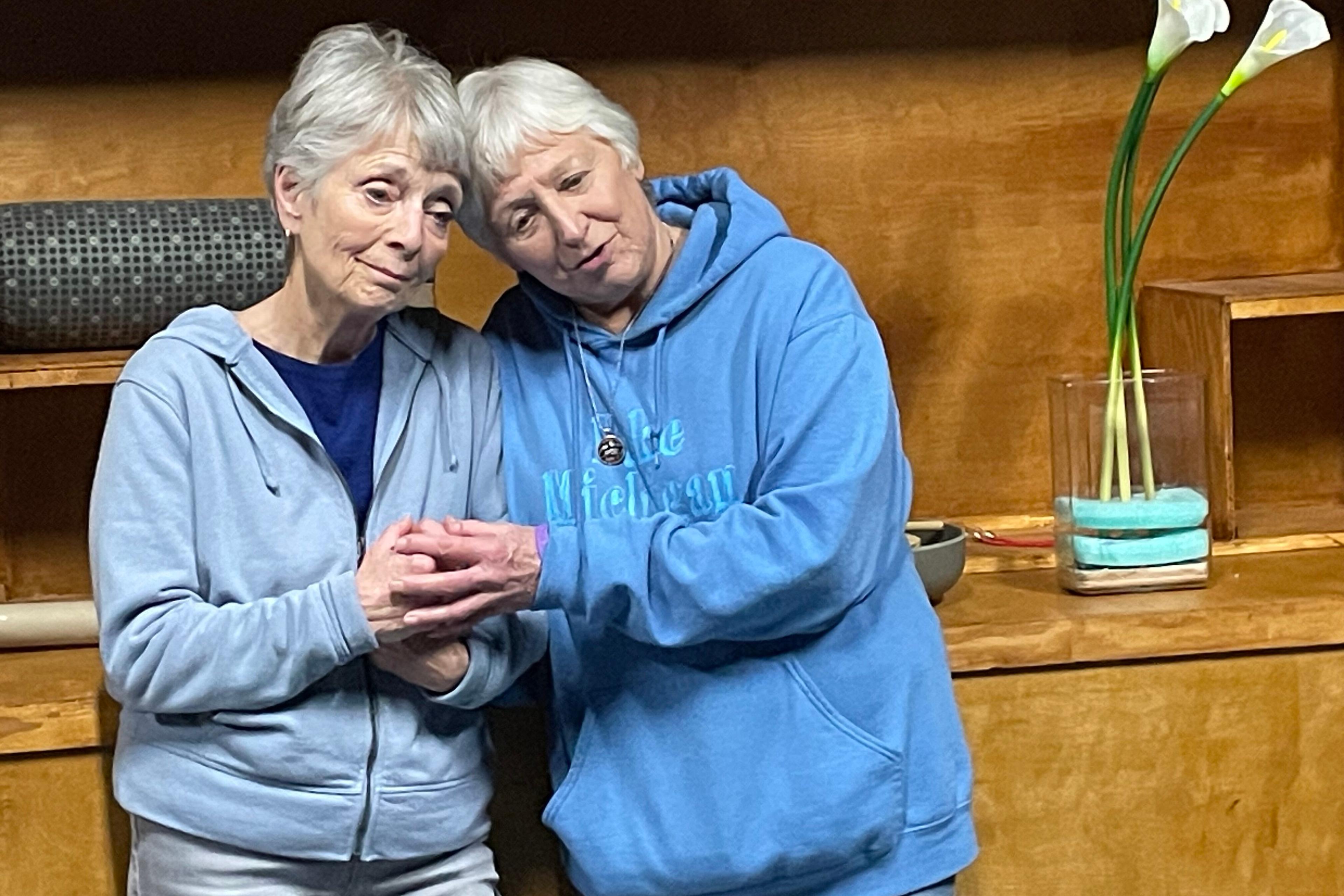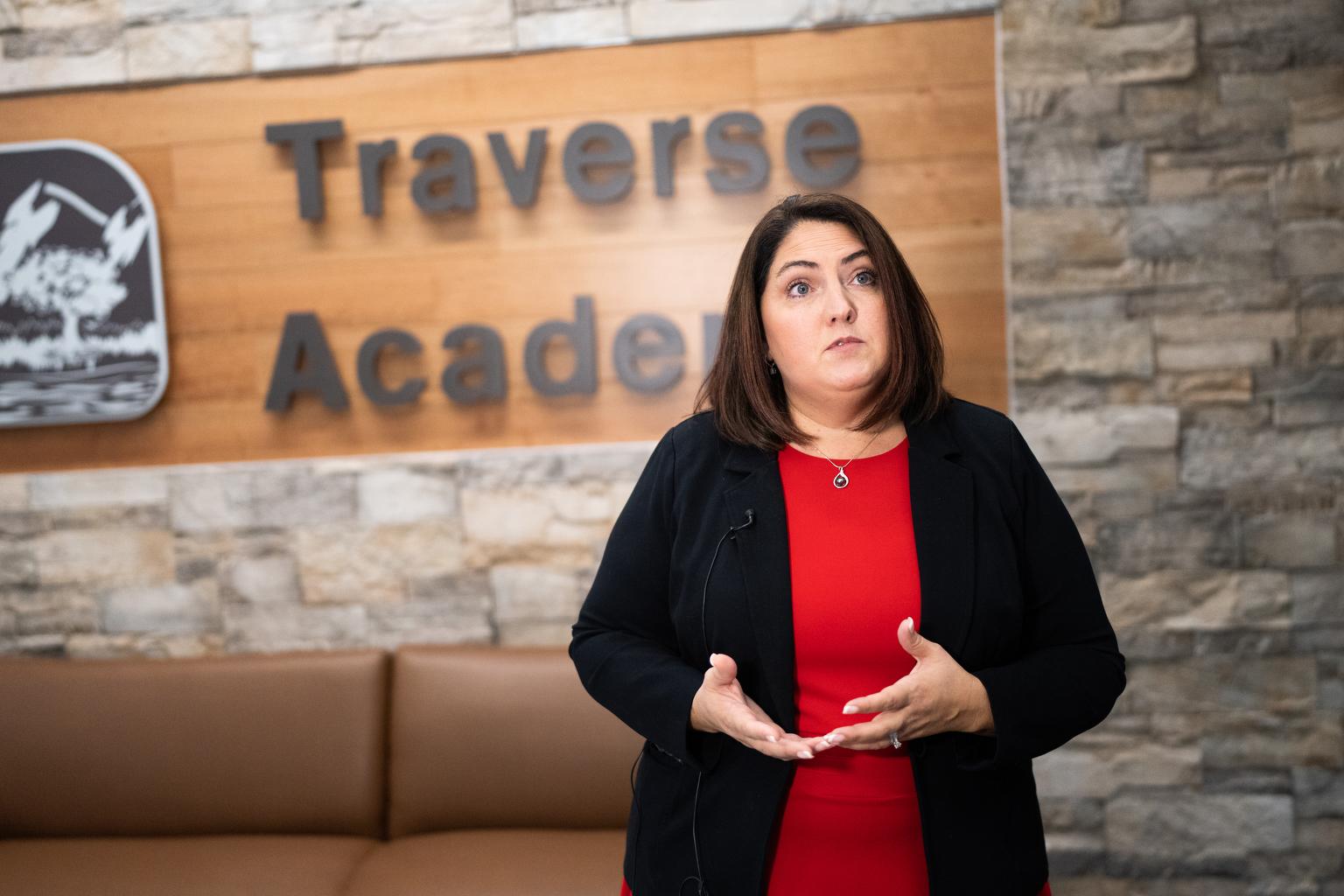
There’s a new school in Aurora filled with natural light, calming therapy rooms, a coffee shop — and psychiatrists.
Starting next month, students in the Cherry Creek School District will attend the country’s first school-run mental health day clinic. The Traverse Academy is for students 10 through 18 with severe mental health conditions ranging from anxiety and depression to suicidal ideations and post-traumatic stress syndrome.
“This school will save lives,” said Superintendent Chris Smith.
To confront a chronic shortage of mental health care facilities for youth, Colorado’s fourth largest school district partnered with the University of Colorado School of Medicine. The goal is to help students with severe mental health needs get intensive clinical support while continuing their schooling.
The name, Traverse Academy, reflects the four great traverses in Colorado mountain climbing, representing the obstacles to overcome as one moves from one peak to the next. At full capacity, it will serve up to 60 students.
Why did a school district build a school focused on mental health?
More children and youth have such severe mental, emotional and behavioral challenges, it’s beyond the ability of school counselors to meet their needs. School psychologist Dr. John Smrcka said those students have a hard time functioning in school.
“They may be having behavior problems in the classroom or just in the school in general,” said Smrcka, who will work alongside 30 mental health staff and teachers. “And all those things can be a major disruption to them getting the education that we hope that they're getting in school. And it can have a negative impact on the students that are around them as well.”
If a family is lucky enough to get into a day treatment facility, there’s no schooling so reintegration back into a child’s homeschool is usually rough.
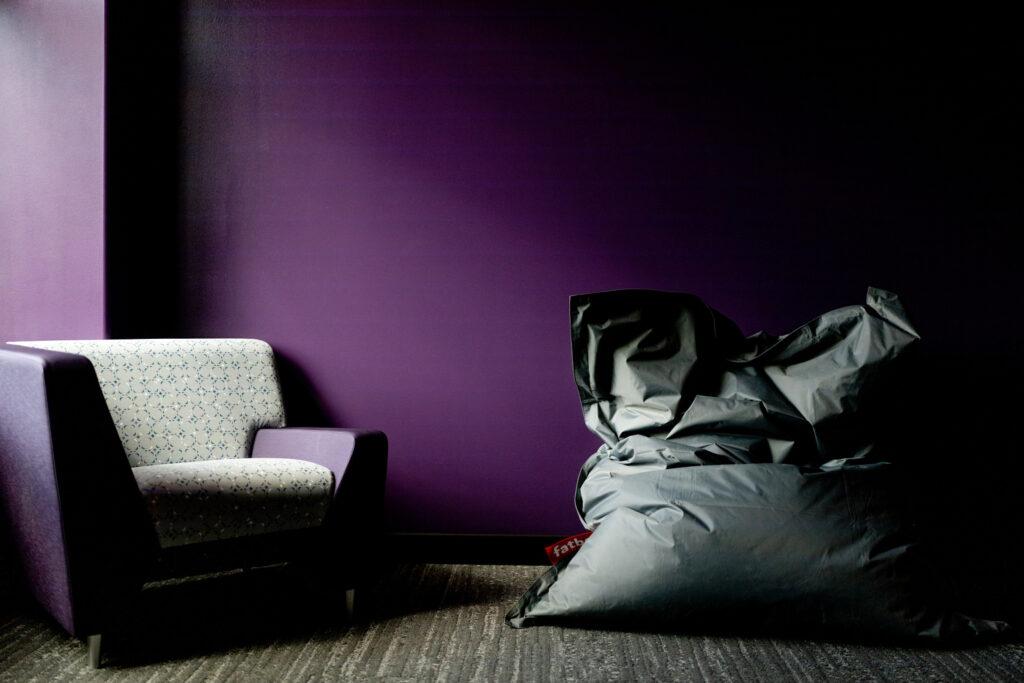
“Those facilities don't understand the ins and outs of the daily school demands and triggers that our students face,” said Traverse principal Kimberly Avalos.
And day-treatment programs are rapidly disappearing because of lower insurance and Medicaid reimbursement rates. There were 77 facilities in 2013, and now there’s just 16. Tony Poole, the district’s assistant superintendent for special populations, said the root of the crisis started in the early 1990s when many institutions closed down.
“When they closed down, they pushed their kids to residential facilities. Kids that were in residential facilities got pushed into day treatment, and those kids got pushed back to school. And that has continued to happen for the last 20 years,” Poole said.
Since Children’s Hospital Colorado declared a pediatric mental health “state of emergency” in 2021, “the mental health crisis has only gotten worse,” he said.
With suicide rates climbing, in the middle of the pandemic, the school district went to voters with the idea. They overwhelmingly approved a bond measure that paid for the $19 million school.
“They sent a message to our youth that shows them, we are going to invest in you because you are important,” said Avalos. “We're sending them a message of, ‘this world is better with you here.”’
District and medical officials worked from a blank slate.
They couldn’t find schools anywhere that were serving children in an acute mental health crisis. It was at times challenging, to combine a school system and a clinical system that have traditionally operated in silos. Each has its own language and regulations.
“Navigating those nuances has been interesting,” said Avalos. “We've had moments where we've had to pause and wait and see if we can work through those pieces. We've had moments where we've had to pivot, and we have moments where it has just come together so seamlessly and beautifully in inspiring ways.”
How will the school work?
A student’s home school will make a referral. CU Medicine will assess the student and then treatment begins. School social workers and psychologists will work with the student along with clinical psychologists and psychiatrists. Educators will provide academics and all teams will make sure the transition back to regular school is a smooth one.
The school is split into pods – students with severe needs, moderate needs and one for those ready to transition back to regular full-time school.
“Severe are the students who are not able to come to school, not able to function at all,” said Dr. Vidya Duff, a clinical liaison. “‘Moderates’ are flying sometimes under the radar or they're more functional, but not as debilitated as our severe population.”

Students will get nine hours of therapy each week, in addition to academic, social and emotional skills to help them integrate back into regular school. Academic time gradually increases during a student’s time at the school. Most stays at the clinic will be six to 10 weeks.
“I think that giving kids a chance to get their needs met and live and operate as normally as possible in the schools where they belong is going to go a long way to ameliorating all these different social problems that I think that we're seeing,” said Smrcka.
The district has hired its own clinical physicians trained through CU and who are able to provide some therapies that CU can. That means children can continue to get services when insurance expires or even if they don’t have insurance.
Natural light, a labyrinth and a psychologist
When you walk into the Traverse Academy, you aren’t greeted by a formal, institutional intake desk. Instead, it’s a coffee shop. The design aims to destigmatize mental health and make students feel welcome.
There are couches, lamps, little nooks where kids who are overwhelmed can go. The wall colors are warm greens, blues and purples and natural light is plentiful.
The levels of the building are themed ocean, forest, and mountains – representing the progression of students through the school with severe, moderate, and transitional needs. Rooms have names like Sand Dune, Forest, Summit and River.
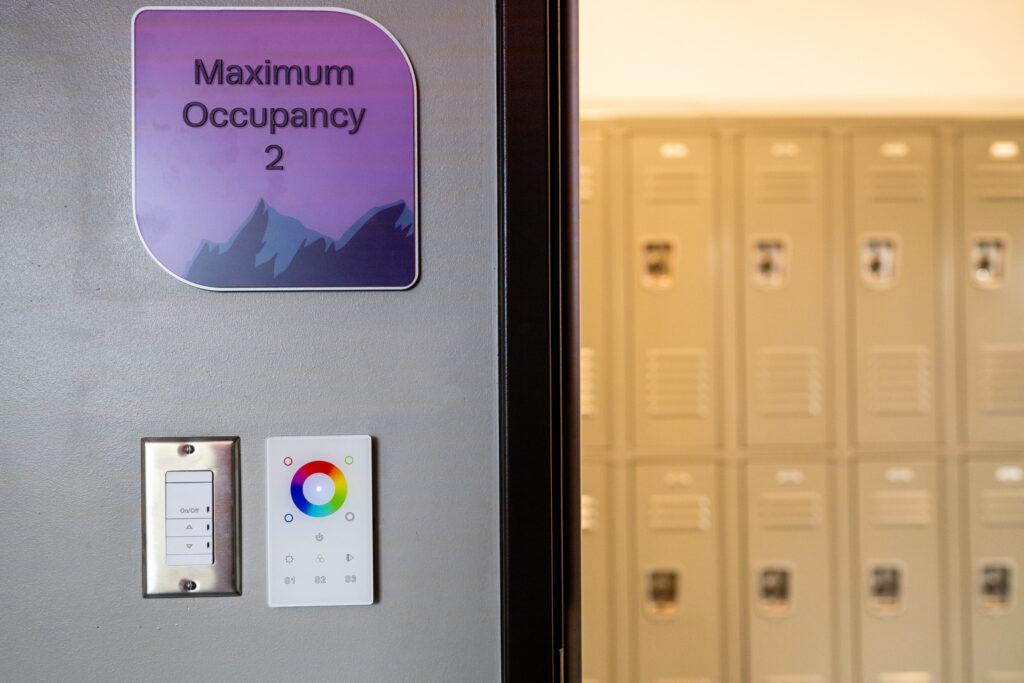
The rooms on the first floor for students with more intensive needs have rounded edges so students can’t hurt themselves. There are beanbags, comfy chairs and special break rooms where students can adjust the color and intensity of overhead lights to calm and soothe. The students don’t move at the sound of a bell. Clinicians and teachers move to the students.
“Every room is different in a way that students can experience on a different scale, a different color scheme, their ability to be alone or be with a group and their ability to go outside quickly,” said architect Kasia Bulkowski with MOA Architecture.
Research shows many people suffering from mental health challenges need to move as part of their recovery. The school has a small gym, a bouldering wall and a labyrinth for students to walk on that leads to a trail around the building.
“If climbing is regulating, we'll teach you to do that,” said Avalos. “If going for a walk is regulating, we'll teach you how to use those tools. Those are lifelong skills they can take with them far beyond these walls.”
There’s also an outdoor amphitheater classroom and other outdoor recreation opportunities for the students.
“We're essentially trying to create a space that teaches kids how to break a negative thought spiral,” said Bulkowski. “That became a cornerstone for how we designed this facility.”
Could Traverse be a model for the rest of the country?
The fact of the matter is the youth mental health crisis is affecting schools. Families turn to schools when they’re struggling financially or their child has mental health issues and can’t find support, said Superintendent Smith.
“So, if that opportunity doesn't lend itself in our community, then it's our responsibility to do something about it. And unfortunately, that's the situation we were put in.”
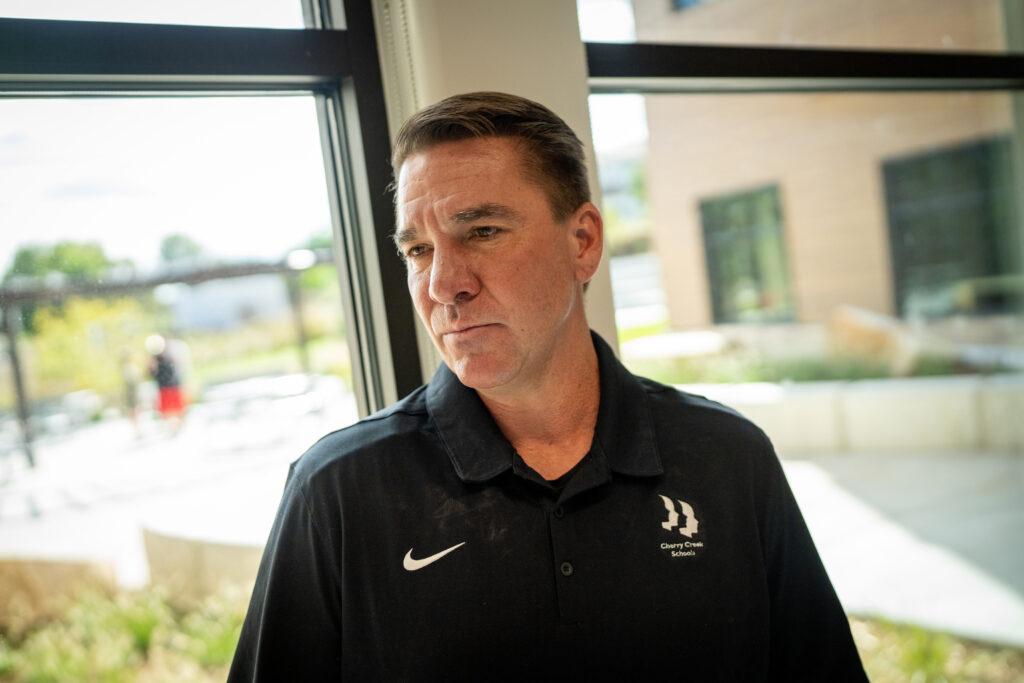
Smith hopes the new school opens the doors to state officials thinking about more out-of-the-box solutions to meet kids’ needs.
One young man is especially excited about assisting the school’s students. Jacob Eggleston, 21, will be a classroom aide. When he was a student in the district, he suffered from suicidal thoughts, depression, guilt and anger. It was a struggle to do academic work.
“I went to therapy nonstop, but none of it seemed like a home. And that's why I love this place so much. It seems like a home, and they are welcoming and accepting and they just cherish every small detail for the benefit of the kids.”
Though Traverse hasn’t yet opened its doors , Avalos said she’s already been contacted by the Cleveland Clinic and by institutions in Oregon and Massachusetts who are interested in the model. After the gift from voters, Avalos spoke of another gift.
“How can we help others learn from what we're learning and do it for their students, do it in their schools, or do it in their communities, do it in their school districts? That would be a huge gift that we could give back to beyond our school district.”
The school opens its doors to students Oct. 23.





